Latest CoStar Composite Price Indices Showed Continued Gains Through Year End
CCRSI RELEASE – January 2021
(With data through December 2020)
Print Release (PDF)
Complete CCRSI data set accompanying this release
This month's CoStar Commercial Repeat Sale Indices (CCRSI) provides the market's first look at commercial real estate pricing trends through December 2020. Based on 1,732 repeat sale pairs in December 2020 and more than 236,292 repeat sales since 1996, the CCRSI offers the broadest measure of commercial real estate repeat sales activity.
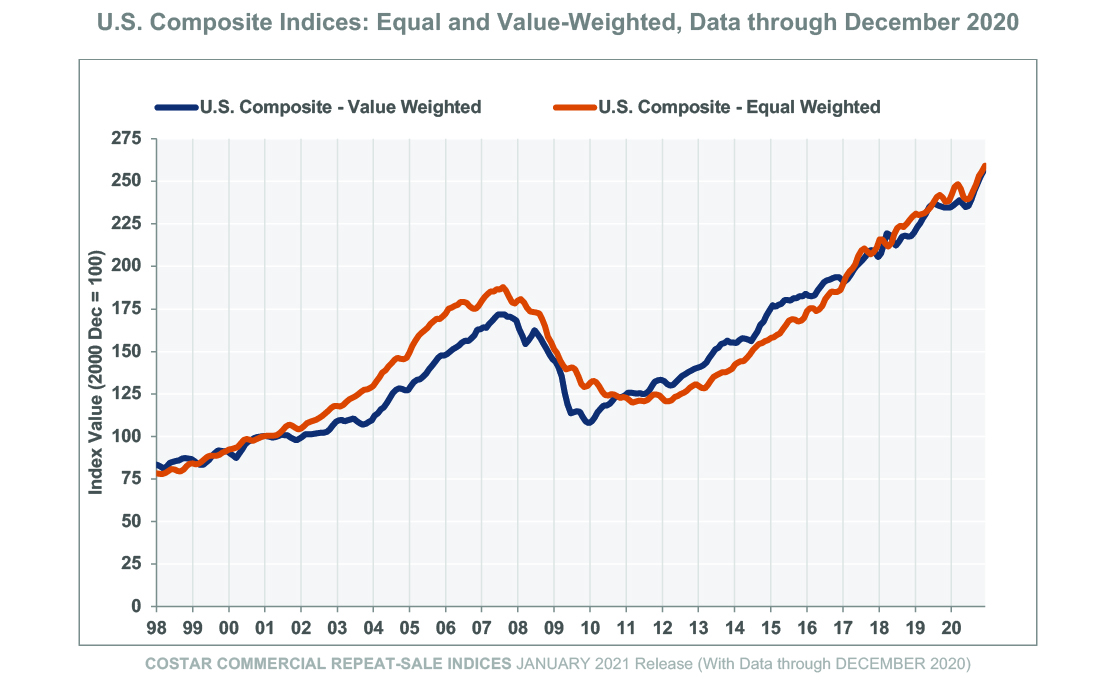
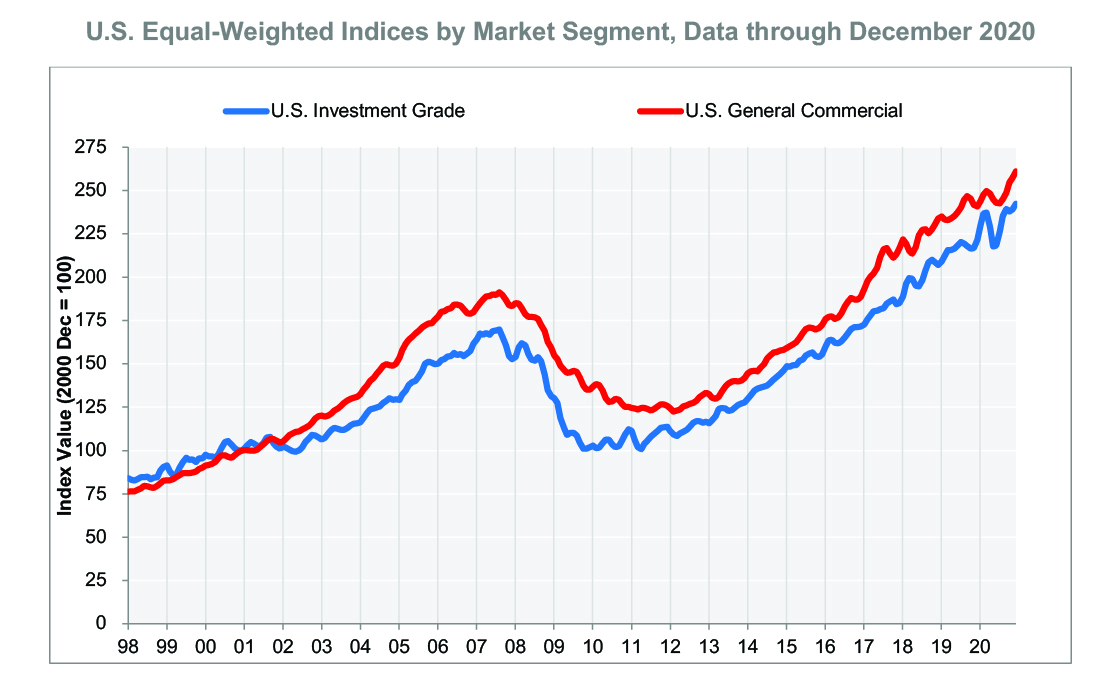
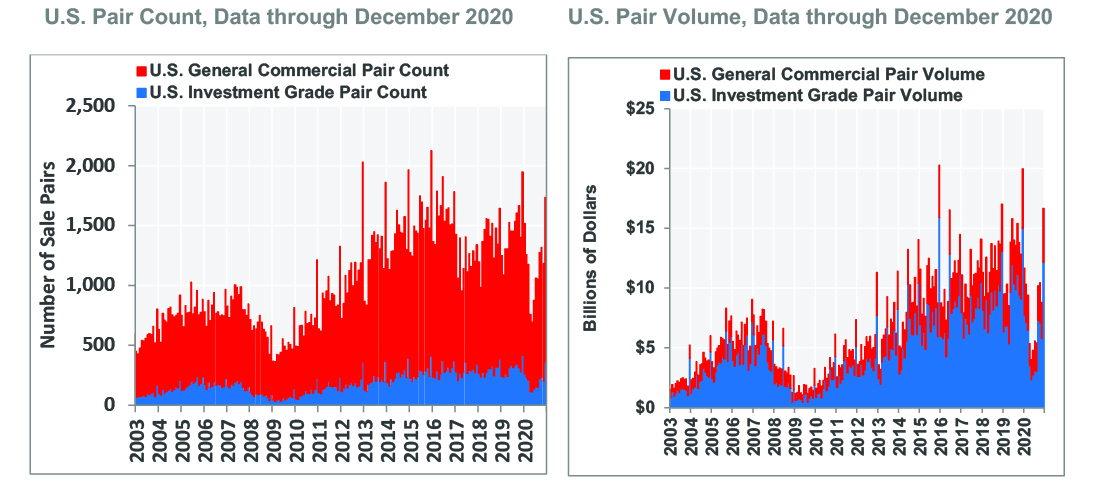
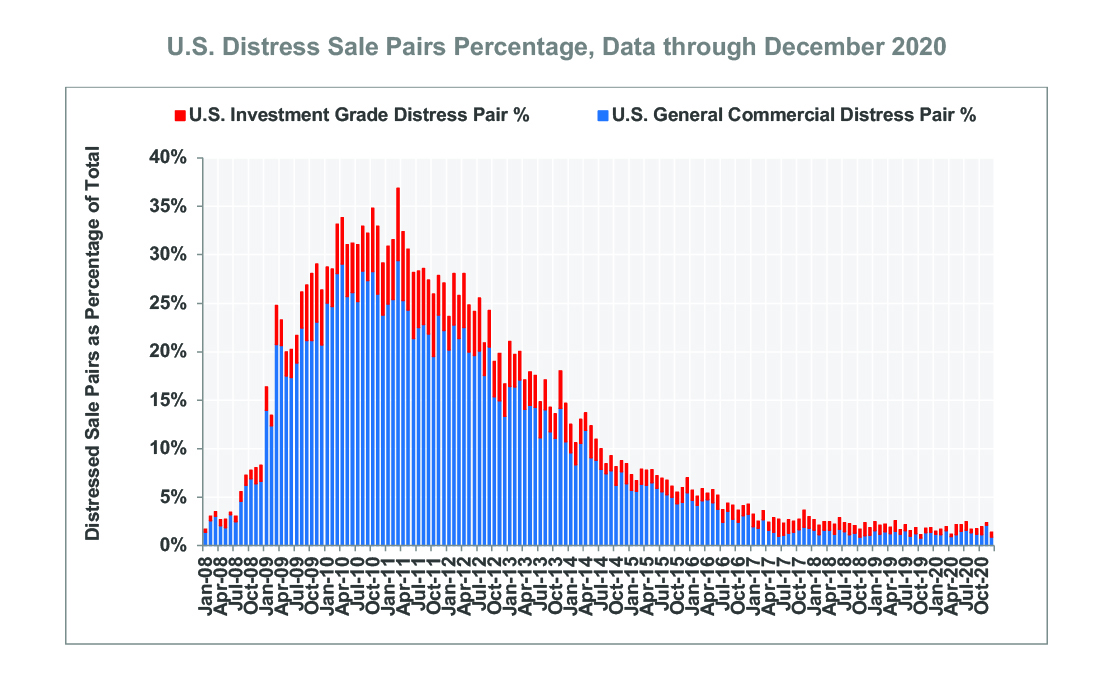

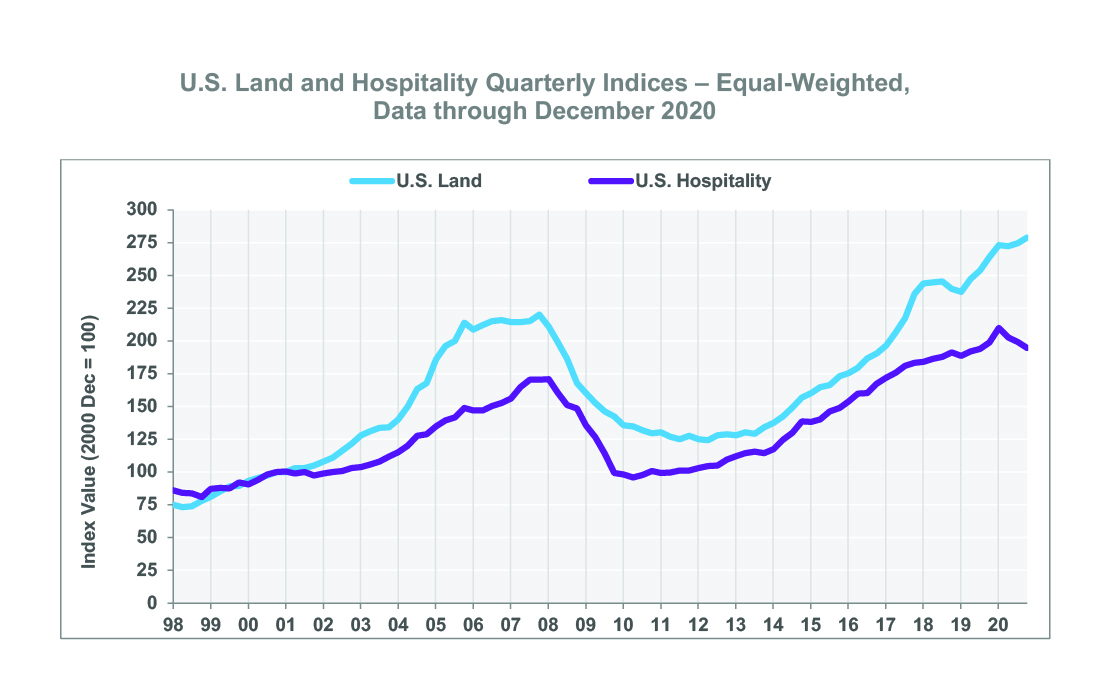
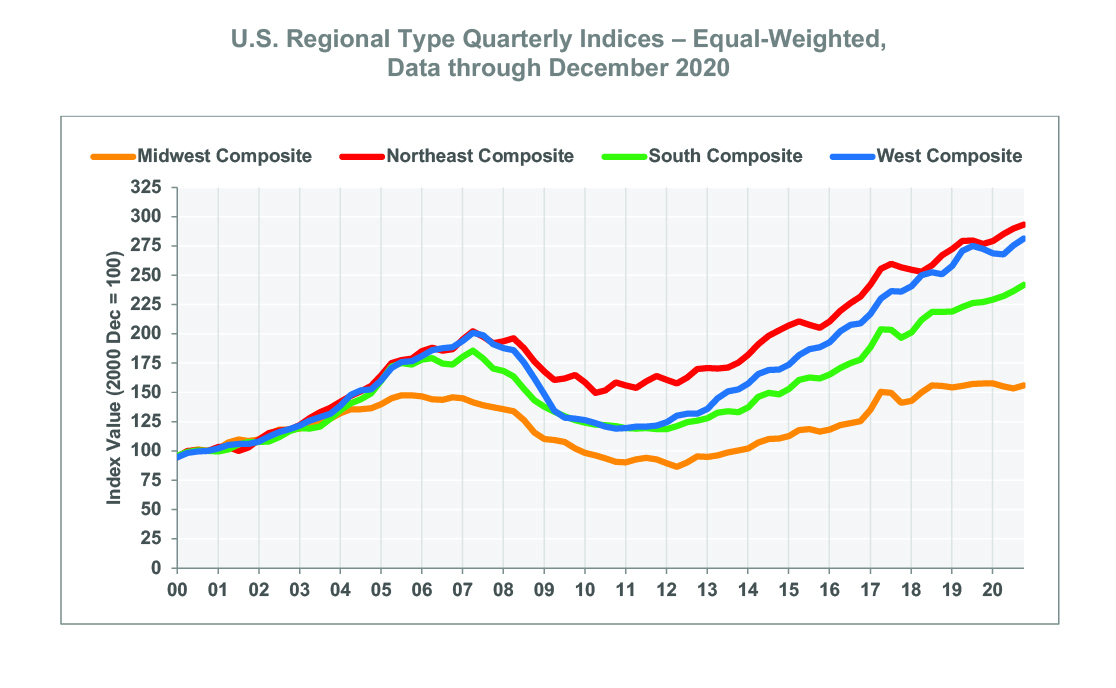
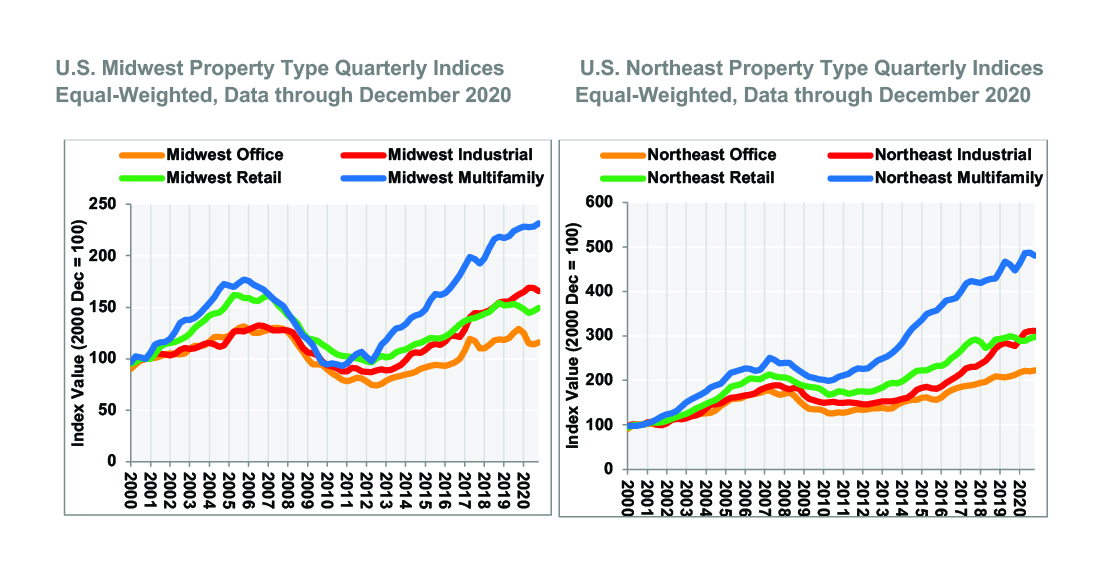
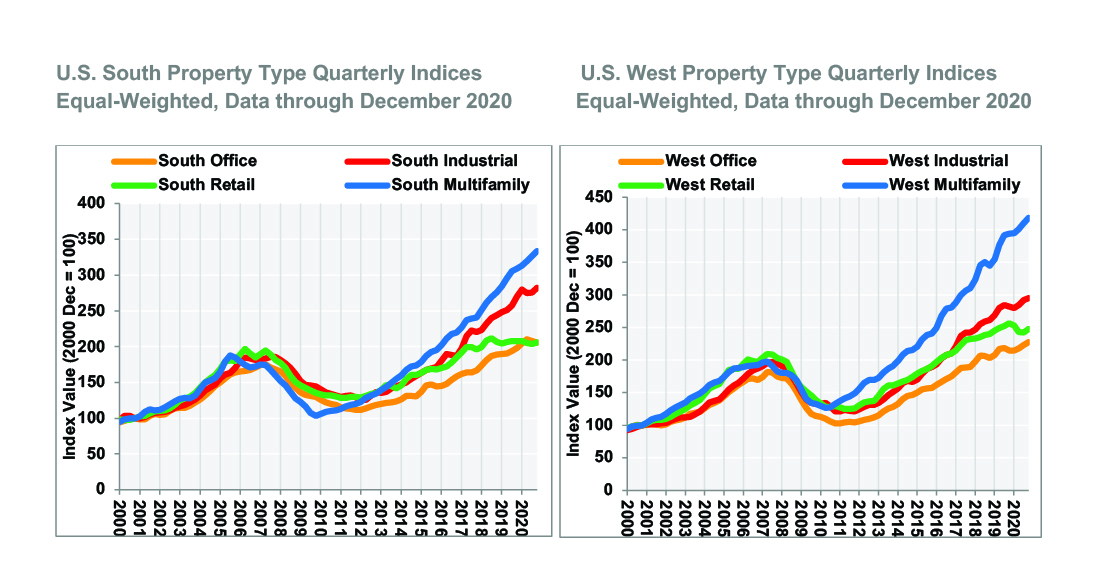
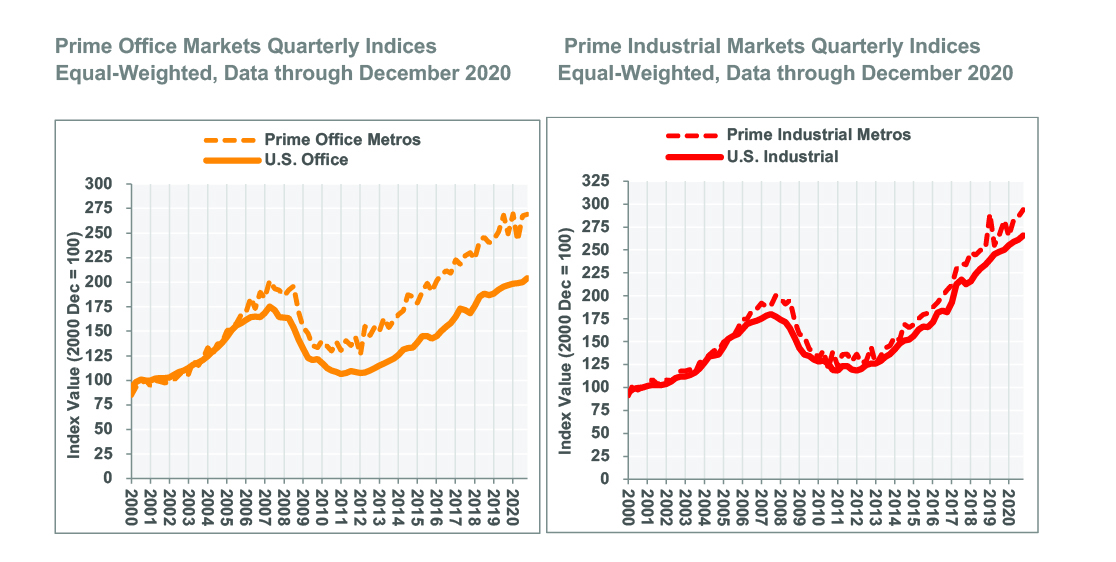
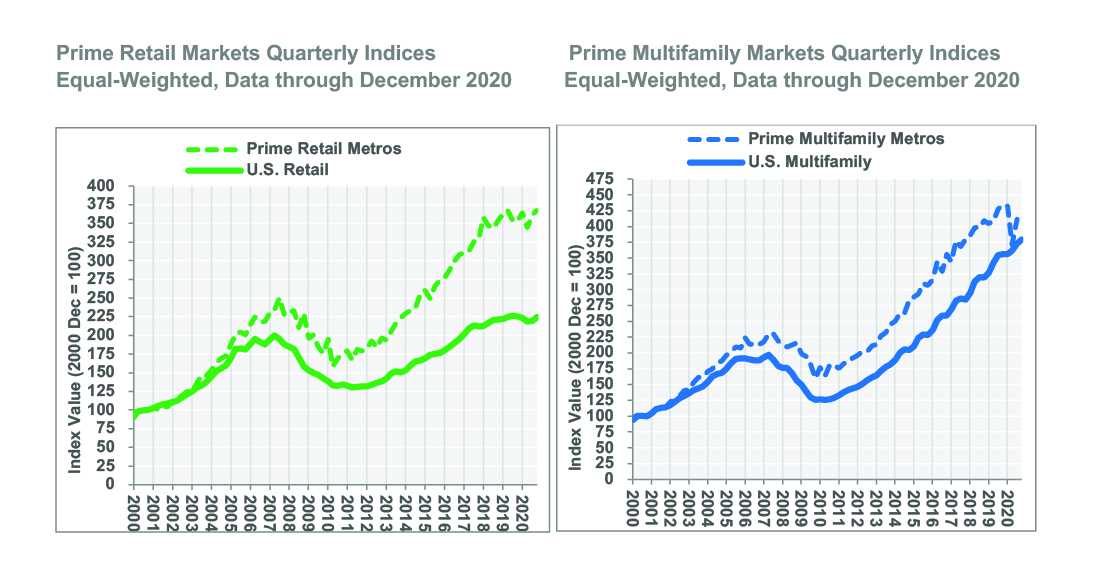
CCRSI National Results Highlights
-
COMPOSITE PRICE INDICES ROSE IN 2020 DESPITE RECESSION. Both U.S. Composite Indices posted stronger gains in 2020 than the year prior, with 8.8% growth in the equal-weighted U.S. Composite Index, which reflects lower-value trades typical of the broader market, and 9.1% growth in the value-weighted U.S. Composite Index, which is more heavily influenced by high-value trades. Stimulus from the Federal Reserve and Congress helped keep interest rates low and cash flow intact, stirring a rise in CRE prices even as social-distancing efforts were utilized to combat the spread of the COVID-19 pandemic. The sharp decline in transaction activity likely helped stabilize pricing, as investors increasingly focused on higher-quality assets.
-
PRICE GAINS AMONG THE MAJOR PROPERTY TYPES WERE BROAD IN FOURTH QUARTER OF 2020. The four major property types of office, industrial, retail and multifamily all posted strong gains of close to or over 2% in the final quarter of 2020. The Multifamily and Industrial indices led growth on an annual basis within the equal-weighted sub-indices, rising 6.5% and 6.1%, respectively. Multifamily was a major beneficiary of fiscal stimulus payments, where incomes rose over the year in spite of sharp declines in employment, in addition to the demand for more space in light of work-from-home protocols. The industrial sector, meanwhile, benefited from an acceleration towards e-commerce as social-distancing mandates limited access to brick-and-mortar retail. The U.S. Office Index posted a more modest 3.7% gain in 2020, the lowest price appreciation on an annual basis since the previous recession amid uncertainty concerning the future of office use and remote work. Retail space faced obstacles, as well, as the U.S. Retail Index fell by 0.5% in 2020, the first decline for the sector since 2011 on an annual basis.
-
SOUTH AND NORTHEAST LEAD REGIONAL PRICE GAINS. Price gains accelerated in 2020 compared to 2019 for both the South and Northeast. The South Composite Index gained 6.4% for the 12-month period ending in December 2020, compared to 3.8% the year prior. In a similar fashion, the Northeast Composite Index rose by 6.0% in 2020, compared to a 3.6% gain in 2019. The West Composite posted a more modest gain of 3.3% in 2020, while the Midwest Composite Index bore the brunt of the 2020 recession with a 1.1% decline.
-
TRANSACTION VOLUME FELL SHARPLY IN 2020. Composite pair volume of $102.6 billion in the 12-month period ending in December 2020 marked a 35% decrease from the 12-month period ending in December 2019. The decrease in volume was more pronounced among investment-grade properties, though it declined sharply in the general commercial property segment, as well. The share of trades COSTAR COMMERCIAL REPEAT-SALE INDICES JANUARY 2021 Release (With Data through DECEMBER 2020) classified as distressed remained low, however, at a monthly average of 1.3% and 0.6% in 2020 for general commercial and investment-grade trades, respectively. Both marks remain below respective five-year averages of 1.8% and 0.9%.
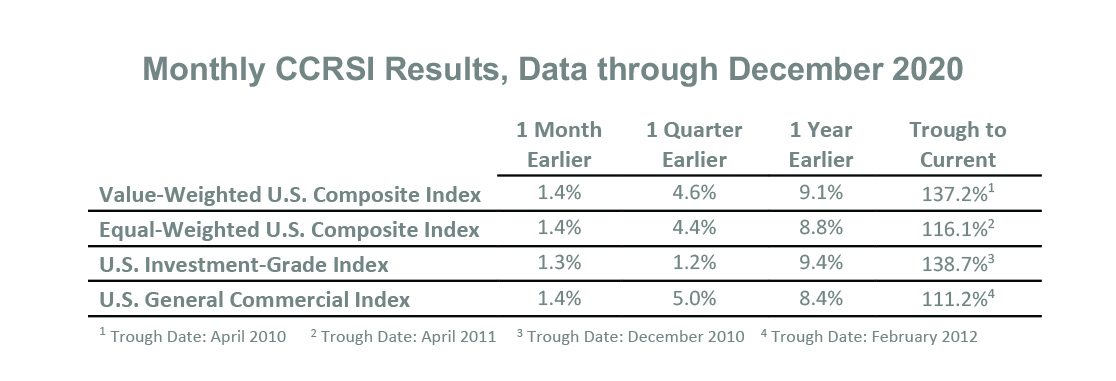
Annual CCRSI Property Type Results
-
ALL PROPERTY TYPES EXPERIENCED A DECELERATION IN PRICE GROWTH IN 2020. As the economic expansion finally ended, all four major property types— office, industrial, retail and multifamily—observed a deceleration in price growth in 2020. The Multifamily Index posted the largest gains of any property type in 2020 at 6.5%. This was trailed closely by the Industrial Index with a 6.1% gain, then the Office Index at a 3.7% gain, while the Retail Index experienced a slight decline of 0.5%.
-
METRO DIVERGENCES WERE SIGNIFICANT IN 2020. The prime metros indices performance in 2020 depended largely on property type. The Prime Office and Prime Retail Prime Metros indices experienced stronger growth than their national counterparts, with the Prime Office Metros Index gain of 7.9% doubling price gains of the broad Office Index and the Prime Retail Index rising 4.1% while the broad Retail Index fell. The reverse was true for industrial and retail: The Prime Industrial Index rose by 4.1% compared to a stronger 6.1% rise in the broad Industrial Index, while the Prime Multifamily Index posted a sharp 7.4% decline compared to a 6.5% rise in the Multifamily Index.
-
OFFICE PRICE GROWTH WAS LOWEST SINCE PRIOR RECESSION. The U.S. Office Index increased by 3.7% in 2020, the weakest annual growth since 2011. The sector faced heightened uncertainty around the future of office use given the transition to work-from-home protocols in light of social-distancing measures.
-
INDUSTRIAL PRICE GAINS CONTINUED AT STURDY PACE. The U.S. Industrial Index posted another strong gain in 2020, rising 6.1% over the year. This marks the 10th straight year of annual gains, though at a declining rate since 2018. Industrial outperformed in non-prime markets, as e-commerce gained market share across the U.S.
-
MULTIFAMILY SECTOR POSTED THE LARGEST PRICE GAIN NATIONALLY. With a price gain of 6.5% in 2020, the Multifamily Index outpaced all other major property types. However, this was not the case in Prime Metros, as the Prime Multifamily Index declined by 7.4% in 2020. The COVID-19 pandemic adversely impacted dense urban cores in major metros, as employees transitioned to remote work and sought to avoid expensive, crowded areas.
-
RETAIL SECTOR POSTED FIRST ANNUAL PRICE DECLINE SINCE 2011. The U.S. Retail Index declined by 0.5% in the 12-month period ending in December 2020, ending its post-2010 run of modest price gains. The Prime Retail Index, however, stayed steady, rising by 4.0% in 2020 after remaining roughly unchanged in 2019. In spite of social distancing limiting retail traffic in 2020, prime properties with long-term viability appear to have remained attractive to long-term investors.
-
U.S. HOSPITALITY INDEX POSTED FIRST ANNUAL PRICE DECLINE SINCE 2009. The U.S. Hospitality Index declined by 2.2% in the 12-month period ending in December 2020, the first annual decline since 2009. Hotels were more impacted than any other property type as lockdowns and social-distancing measures disrupted business and leisure travel.
-
U.S. LAND INDEX GROWTH CONTINUED IN 2020. The U.S. Land Index tends to be the most volatile of the property type indices but returned a 5.6% gain in 2020, a middle-of-the-road result compared to historical changes.
Annual CCRSI Regional Results
-
REGIONAL INDEX PRICE PERFORMANCE DIVERGED IN 2020. The South Composite Index and Northeast Composite Index saw the biggest price gains in the 12-month period ending December 2020, at 6.4% and 6.0%, respectively. The West Composite Index posted a more modest 3.3% gain in the 12-month period ending December 2020, while the Midwest Composite Index declined by 1.1%.
-
THE MULTIFAMILY SEGMENT CONTRIBUTED TO STRONGER GAINS IN SOUTH REGION. The South region posted strong gains in 2020, outperforming the other regional indices. Multifamily led the way in the South region, up 7.9% as workers sought more spacious apartments due to work-from-home protocols. The South Industrial and Office indices also posted notable increases, up 4.6% and 4.0%, respectively. Retail struggled, with the South Retail Index suffering its worst loss since 2010 with a 1.2% decline.
-
THE WEST INDEX EXPERIENCED GAINS IN ALL SEGMENTS BUT RETAIL IN 2020. The West Retail Index dragged down the region’s price gains in 2020, falling 3.4% over the 12-month period. Other property types in the region posted moderate increases over the same period: a 6.1% rise in the West Multifamily Index, 5.9% rise in office, and 4.4% increase in industrial.
-
INDUSTRIAL LED GROWTH IN THE NORTHEAST IN 2020. The Northeast Composite Index posted a 6.0% gain in the 12-month period ending in December 2020. This represents the largest annual gain for the region since 2017. The Northeast Industrial Index led the way with a sharp 11.8% gain in 2020, as e-commerce use skyrocketed during the pandemic. In spite of the lockdown, the Northeast saw gains in every property type, to varying degrees. The Northeast Multifamily Index rose 7.5% in 2020, while the Northeast Office Index posted a more modest 4.9% gain. The Northeast Retail Index, under intense pressure due to social distancing measures, rose just 0.6% in 2020.
-
MIDWEST FACES PRICING PRESSURES BROADLY. There was little pricing upside to be had in the Midwest in 2020, with the Midwest Multifamily Index performing best at a mere 2.2% gain for the 12-month period ending in December 2020. The Midwest Industrial Index was just behind, gaining 2.1% in 2020, but both represented a deceleration from growth seen in prior years. The office sector faced the largest decline. The Midwest Office Index posted the largest decline of any regional property type, declining by 10.0% on an annual basis in 2020. The Midwest Retail Index, meanwhile, experienced its second consecutive annual decline, falling by 1.0% in 2020.
About the CoStar Commercial Repeat-Sale Indices
The CoStar Commercial Repeat-Sale Indices (CCRSI) is the most comprehensive and accurate measure of commercial real estate prices in the United States. In addition to the national Composite Index (presented in both equal-weighted and value-weighted versions), national Investment-Grade Index, and national General Commercial Index, which we report monthly, we report quarterly on 30 sub-indices in the CoStar index family. The sub-indices include breakdowns by property sector (office, industrial, retail, multifamily, hospitality, and land), by region of the country (Northeast, South, Midwest, and West), by transaction size and quality (general commercial, investment-grade), and by market size (composite index of the prime market areas in the country).
The CoStar indices are constructed using a repeat sales methodology, widely considered the most accurate measure of price changes for real estate. This methodology measures the movement in the prices of commercial properties by collecting data on actual transaction prices. When a property is sold more than once, a sales pair is created. The prices from the first and second sales are then used to calculate price movement for the property. The aggregated price changes from all of the sales pairs are used to create a price index.

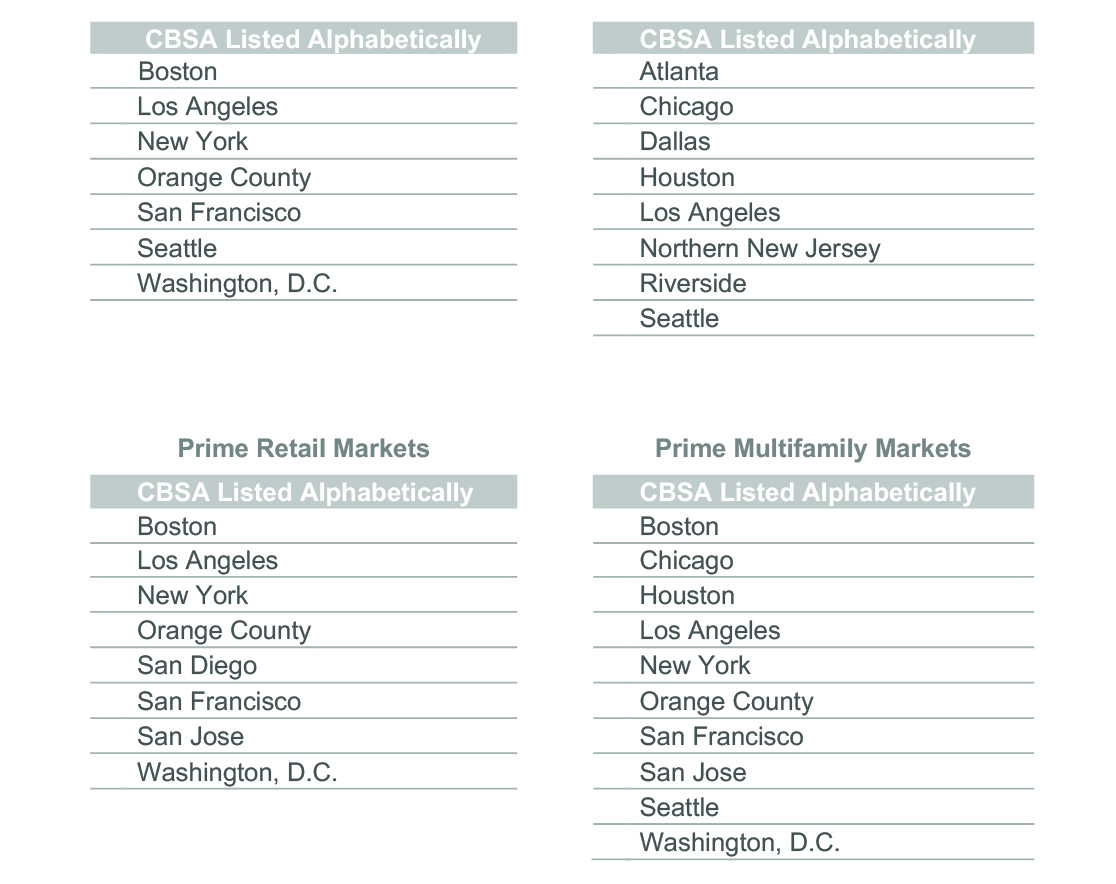
Media Contact:
Gay Beach, Senior Director, Marketing Communications, CoStar Group (gbeach@costargroup.com).
For more information about the CCRSI Indices, including the full accompanying data set and research methodology, legal notices and disclaimer, please visit https://costargroup.com/costar-news/ccrsi.
ABOUT COSTAR GROUP, INC.
CoStar Group, Inc. (NASDAQ: CSGP) is the leading provider of commercial real estate information, analytics and online marketplaces. Founded in 1987, CoStar conducts expansive, ongoing research to produce and maintain the largest and most comprehensive database of commercial real estate information. Our suite of online services enables clients to analyze, interpret and gain unmatched insight on commercial property values, market conditions and current availabilities. STR provides premium data benchmarking, analytics and marketplace insights for the global hospitality sector. Ten-X provides a leading platform for conducting commercial real estate online auctions and negotiated bids. LoopNet is the most heavily trafficked commercial real estate marketplace online with over 7 million monthly unique visitors. Realla is the UK’s most comprehensive commercial property digital marketplace. Apartments.com, ApartmentFinder.com, ForRent.com, ApartmentHomeLiving.com, Westside Rentals, AFTER55.com, CorporateHousing.com, ForRentUniversity.com and Apartamentos.com form the premier online apartment resource for renters seeking great apartment homes and provide property managers and owners a proven platform for marketing their properties. Homesnap is an industry-leading online and mobile software platform that provides userfriendly applications to optimize residential real estate agent workflow and reinforce the agent-client relationship. CoStar Group’s websites attracted an average of approximately 69 million unique monthly visitors in aggregate in the third quarter of 2020. Headquartered in Washington, DC, CoStar Group maintains offices throughout the U.S. and in Europe, Canada and Asia with a staff of over 4,300 worldwide, including the industry’s largest professional research organization. For more information, visit www.costargroup.com.

